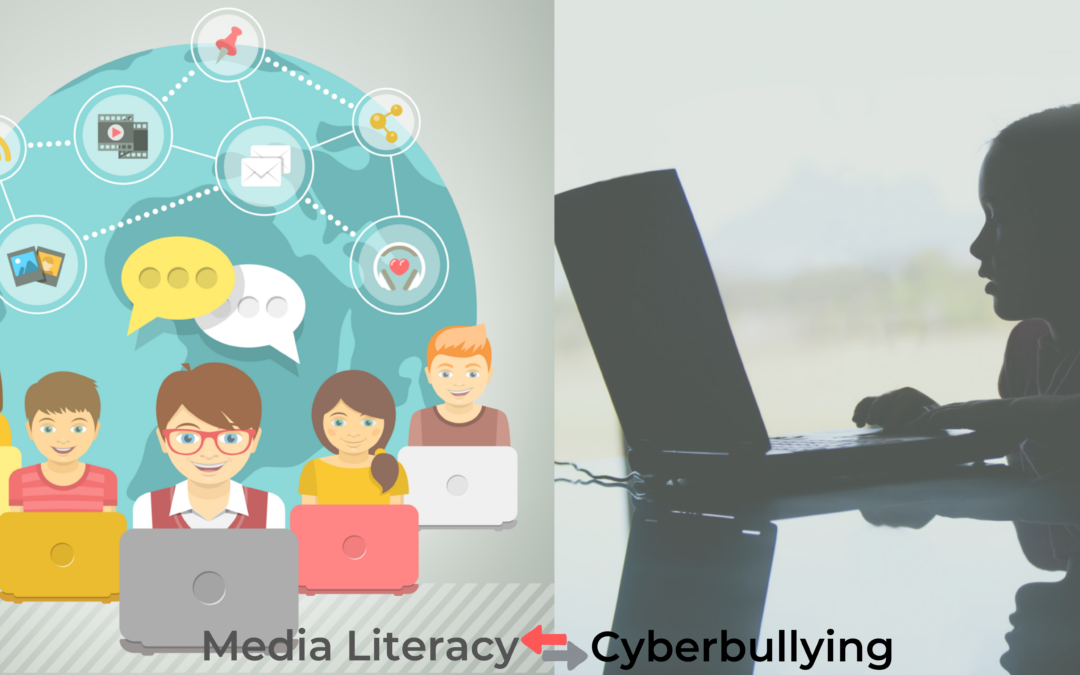Author: Sophie Smit (European Schoolnet)
This week we celebrate the Global Media and Information Literacy Week, from 24 to 31 October. The Global Media and Information Literacy Week is an initiative organised by UNESCO (United Nations Educational, Scientific and Cultural Organization). UNESCO advocates that “every individual should be equipped with media and information literacy competencies to understand the stakes, and to contribute to and benefit from information and communication opportunities.” The KID_ACTIONS project aims to tackle cyberbullying, educating on media and information literacy is an important strategy to reach this goal.
Information and communication technology (ICT) changed the way people communicate (Kowalski, Limber, McCord, 2019; Zhong, 2020). ICT makes it possible for people to build relationships even over great distances and gives access to a large amount of information (Kowalski Giumetti, Schroeder, Lattanner, 2014; Kowalski et al. 2019). It is almost impossible to keep track of the fast development of technologies and digital media. With these fast developments, new terms have emerged such as media and ICT literacy (Zhang & Zhu, 2016).
Media literacy is often defined as the ability to access, analyse, evaluate, and create messages across a variety of contexts (Livingstone, 2004). The European Commission follows a similar definition, media literacy is the ability to access the media, to understand and critically evaluate different aspects of the media and media contents and to create communications in a variety of contexts. It relates to all media, such as television and film, the Internet and other new digital communication technologies (Zacchetti, 2011).
Media literacy is identified as an essential skill that should be taught to younger users of ICT to use the technology in an acceptable way (Livingstone & Brake, 2010; Zhang, Zhu, Sang, 2014). Especially young people are exposed most by digitalization, they are the ones growing up in this digital era. Researchers, therefore, raise the question if youngsters are equipped enough to use technology in an ethical and responsible way (Zhong, 2020). According to them, media literacy education (MLE) is crucial in this society (Zacchetti, 2011; Zhang et al. 2014).
MLE can possibly counter several negative consequences of ICT use. Cyberbullying is one of the negative consequences that emerged on the platforms offered by ICT (Kowalski et al. 2014). Cyberbullying is often defined as “wilful and repeated harm inflicted through the use of computers, cell phones, and other electronic devices” (Hinduja & Patchin, 2015, p. 11). Media and Information Literacy (MIL) is one of the crucial components in fighting cyberbullying. Children and young people increasingly use ICT. Frequent and risky ICT use has been positively associated with cyberbullying perpetration contributes to cyberbullying victimization (Chen, Ho & Lwin, 2017; Kowalski et al. 2019). The negative consequences for kids who are exposed to cyberbullying will remain an issue throughout their lives (Kowalski et al. 2019).
The level of media literacy for adolescents is associated with being involved in cyberbullying or victimization (Sinh & Ahn, 2015). Media literacy can therefore serve as a protective shield for youth for risky behavior online (Zhong, 2020). It is important to educate youth on media and information literacy and use ICT in an appropriate way to protect them from cyberbullying (Livingstone & Brake, 2010).
See for more information on the Global Media and Information Literacy week: Global Media and Information Literacy Week (unesco.org).

